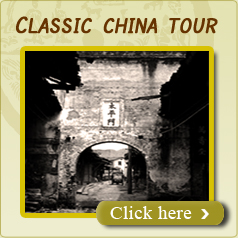Henan Tourism

-
Province:Henan (Chinese:河南, Pinyin: Hénán)
-
Population :98,690,000
-
Area :167,000 square km (64,000 sq mile)
-
Overview:Henan is traditionally regarded as an important cradle of Chinese civilization. The name Henan means "south of the (Yellow) River"
Overview
Henan is one of the province in china .It is located in eastern central part of China.The province has a long history and a developed culture. As early as 5-6 thousands years ago, it had the Peiligang culture and Yangshao culture, and enjoys the reputation of "the Cradle of the Chinese Nation ", with famous scenic spots and historic sites all over the province. Henan possesses 16 major historic and cultural sites under state protection and 267 sites under provincial protection.
The five cities of Luoyang, Kaifeng, Anyang, Nanyang and Shangqiu are classified as the national famous historic cultural cities. The national major famous scenic areas of the province include Mt.Songshan, Mt.Jigong,Luoyang Longmen and Mt.Wangwu-Mt.Yuntai.Other scenic spots ` are Baima Temple, Guanlin ( a place where Guan Yu's head was buried ), Ancient Tomb Museum, Xiangguo Temple, Baogong Shrine, Shaolin Temple and Songyang Academy of classical learning,etc.
Know More
Henan lies in the middle and lower reaches of the Yellow River and covers an area of over 167,000 square kilometres. Zhengzhou is the capital city of Henan Province. Henan is often called Zhongyuan or Zhongzhou , literally "central plains" or "midland"; this name is also broadly applied to the entire North China Plain. It served as the capital of 200 empires during its history of more than 20 dynasties, leaving behind over 1.3 million relics. Henan Province has seven state-level historical and cultural cities. Neighboring Hebei, Shanxi, Shaanxi, Hubei, Anhui and Shandong provinces.
Earlier in the New Stone Age, the light of civilization had appeared and the delicate potteries in the Peiligang Culture and Yangshao Culture, and the character signs and musical instruments 8,000 years ago have filled the present world and the ancient times with wonders. Three of the Seven Ancient Capitals of China are in Henan: Luoyang, Kaifeng and Anyang. Henan is one of the provinces that has the most historical relics in the country. There are 16 key national units of protecting historical relics and 267 provincial units of protecting historical relics. The over-ground historical relics are the second in China .
Henan is flat in the east and mountainous in the west and extreme south. The eastern and central parts of the province form part of the North China Plain. To the northwest the Taihang Mountains intrude partially into Henan's borders; to the west the Qinling Mountains enter Henan from the west and end about halfway across Henan, with branches (such as the Funiu Mountains) extending northwards and southwards; to the far south, the Dabie Mountains separate Henan from neighbouring Hubei province.
Must see

Luoyang is a prefecture-level city in the western regions of Henan province. It was one of the Four Great Ancient Capitals of China.The city borders Zhengzhou, the province capital, to the east, Pingdingshan to the southeast, Nanyang to the south, and Jiyuan to the north.Luoyang has a reputation as a cultivation centre for peony (city flower of Luoyang).
As one of the Four Great Ancient Capitals of China, Luoyang is a famous tourist city. 40 million tourists visited Luoyang in 2007 (an increase of 43.6% from 2006), of which 262,000 were overseas visitors. In 68 AD, the first Buddhist temple in China, the White Horse Temple, was built in Luoyang. The temple still exists, albeit remodeled and bearing 1500s architecture. It was the home of An Shihkao, one of the first monks to popularize Buddhism in Luoyang.There are many tourist attractions in Luoyang. For example, Luoyang Tomb Museum,Wangcheng Gongyuan Park,Skyscraper Pagoda (Qiyun Ta) ,Songshan Mountain ,Temple of the White Horses...
Luoyang Longmen Grottoes is situated in the outer southern edge of the city. Possessing more than 1,400 years of history, over 2,100 grottoes have tens of thousands of statues of Buddha, more than forty Buddhist pagodas and a large number of stone stables. These grottoes, together with the Yungang Grottoes in Datong and the Mogao Caves in Dunhuang, are the three major cave clusters in China.

Kaifeng is a renowned cultural and historical city in Henan Province,it is reputed as “The Capital of Seven Dynasties”. Lying in eastern Henan Province, along the southern bank of the Yellow River, it is adjacent to the provincial capital Zhengzhou to the west, Xinxiang to the northwest, Shangqiu to the east, Zhoukou to the southeast, Xuchang to the southwest and Shandong Province to the northeast. Kaifeng is also known for having the oldest Jewish community in China, which dates back to the Northern Song Dynasty.
Kaifeng is rich in historical and cultural sites, among which the most famous is Da Xiang Guo Temple. It is a famous Buddhist temple first built in AD555. The Temple of Lord Bao is also famous. It was built to memorialize Bao Zheng, a great official during the Song Dynasty. Youguosi Pagoda (also known as Iron Pagoda) and the Astronomical Clock Tower of Susong (who was an engineer and scientist in ancient times) are two popular scenic spots in Kaifeng. Youguosi Pagoda, 54.7-meters high, was first constructed in AD1049 and became a landmark of Kaifeng. The Astronomical Clock Tower is known for its water-powered rotating sphere, the first of its kind.
This city enjoys a profound history and splendid culture. It is one of the major centers of ancient civilization. It served as capital of the Kingdom of Wei (475BC-331BC), and of the Later Liang, Later Han and Later Zhou Dynasties of the Five Dynasties Period (AD907-960), the Northern Song Dynasty (AD960-1137) and the Jin Dynasty (AD1115-1334). Kaifeng became of a major commercial center during the seventh century, when it was connected to the Grand Canal.




